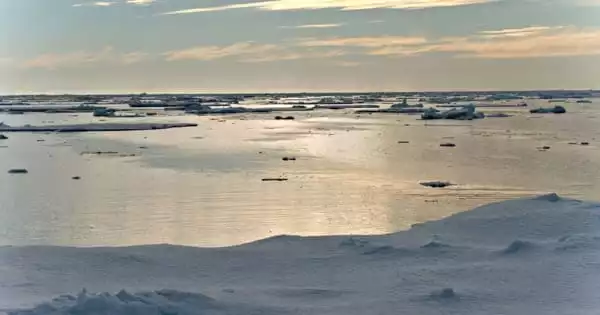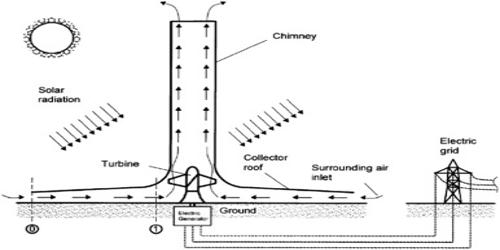Despite global warming and Arctic sea-ice decrease, the Antarctic sea-ice extent has remained relatively constant since 1979. In contrast to actual observations, existing climate model-based predictions show dramatic sea-ice retreats. The water may decrease warming around Antarctica and delay sea-ice loss, according to specialists at the Alfred Wegener Institute.
Given that many models are incapable of adequately capturing this element and the significance of ocean eddies, the study, which was just published in the journal Nature Communications, lays the groundwork for improved simulations and forecasts of the Antarctic’s future evolution.
Global warming is accelerating, causing effects that can be felt all across the world. Climate change has had a particularly dramatic impact in the Arctic: since the commencement of satellite observation in 1979, sea ice has reduced dramatically in response to rising global temperatures. According to the most recent projections, the Arctic might be ice-free in summer by 2050, and in some years even before 2030.
However, on the other side of the globe, in Antarctica, sea ice appears to have escaped the global warming trend. There have been higher interannual fluctuations after 2010 than in the prior period. However, with the exception of a major negative excursion from 2016 to 2019, the long-term mean sea-ice cover surrounding the Antarctic continent has been steady since 1979. As a result, the observed reality differs from the majority of scientific simulations, which show significant sea-ice loss during the same timeframe. “The so-called Antarctic sea-ice paradox has been a source of concern for the scientific community for some time,” explains first author Thomas Rackow of the Alfred Wegener Institute, Helmholtz Centre for Polar and Marine Research (AWI).
Our findings support the concept that climate models and projections of Antarctic sea ice will be significantly more trustworthy once they are capable of realistically recreating a high-resolution ocean with eddies.
Thomas Rackow
“The existing models are unable to accurately describe the behavior of Antarctic sea ice; some critical component appears to be lacking. This also explains why the Intergovernmental Panel on Climate Change (IPCC) says that model-based forecasts of future Antarctic sea ice have a low level of confidence.” In the Arctic, however, the models are already so trustworthy that the IPCC assigns a high level of confidence to their estimates. “With this research, we now have a foundation for making future estimates for Antarctica considerably more reliable.”
The AWI Climate Model was used by the researchers during the investigation (AWI-CM). Unlike previous climate models, the AWI-CM enables significantly more detailed simulations of crucial regions such as the Southern Ocean – or in other words, “high resolution.” As a result, mixing processes in the ocean generated by smaller ocean eddies with sizes of 10 to 20 kilometers can be included directly.

“For our simulations, we used a wide variety of settings. Throughout the process, it became obvious that only models with a high-resolution depiction of the Southern Ocean around Antarctica exhibited delayed sea-ice retreat comparable to what we see in reality” Rackow explains. “When we extended the model into the future, we discovered that even under the most adverse greenhouse-gas scenario, the Antarctic sea-ice cover remained relatively steady until mid-century. After that, the sea ice retreats quickly, as it has been doing for decades in the Arctic.”
As a result, the AWI study provides a possible explanation for why Antarctic sea ice does not follow the global warming trend. “The paradoxical stability of the sea-ice cover could be due to a variety of factors.” The hypothesis that more Antarctic meltwater stabilizes the water column and, consequently the ice by protecting the cool surface waters from the warmer deep waters is being debated. Another idea holds that the major culprits are the westerlies blowing around Antarctica, which have been intensifying as a result of climate change. These winds have the potential to spread out the ice like thin pizza dough, allowing it to cover a larger region. In this scenario, the ice volume could already be declining, while the ice-covered areas would give the illusion of stability,” Rackow explains.
AWI’s research now focuses on ocean eddies. These could play a critical role in dampening and therefore postponing the consequences of climate change in the Southern Ocean, allowing the ocean to transfer additional heat taken up from the atmosphere north, toward the Equator. This northward heat transmission is strongly linked to the underlying overturning circulation in the upper 1,000 meters of the ocean, which in the Southern Ocean is driven by the wind on the one hand but is also impacted by eddies on the other.
While the northward component of the circulation is increasing due to stronger westerlies, the simplified eddies in low-resolution climate models frequently appear to compensate for this factor by a southward component toward Antarctica; the explicitly simulated eddies in the high-resolution model exhibit a more neutral behavior. Taken together, the high-resolution model shows a more pronounced northerly trend in heat transmission. As a result, the ocean around Antarctica heats more slowly, and the ice cover remains stable for a longer period of time.
“Our findings support the concept that climate models and projections of Antarctic sea ice will be significantly more trustworthy once they are capable of realistically recreating a high-resolution ocean with eddies,” Rackow adds. “Thanks to parallel supercomputers’ ever-increasing performance and new, more efficient models, next-generation climate models should make this a normal process.”















